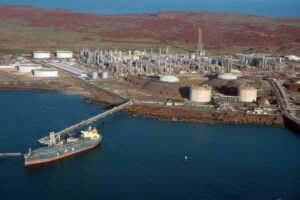At 1MW, it isn’t the largest solar power project in the nation, or even the state. But the 3,000 solar panels on bend of a river near the Tennessee/Virginia tell a story which is playing out across the United States, and the world.
Next to the solar plant, which was recently put online by Birdseye Renewable Energy and United Renewable Energy, towers the concrete ruins of a nuclear power plant which began construction in 1978. However, work on the Phipps Bend Nuclear Power Plant was stopped by the Tennessee Valley Authority (TVA) three years later.
The new solar plant will now sell power to local utility Holston Electric through a TVA program.
Citing contemporary documents, local press concluded that the Phipps Bend Nuclear Power plant was the victim of declining power demand due to aluminum plants shutting down in the South, but globally the tide of nuclear was turning.
And while citizen pressure to abandon nuclear power was rising in the wake of the Three Mile Island incident, cost overruns and declining growth in electricity demand rates were more damning factors, and utilities abandoned around 100 nuclear power plants in mid-construction.

The timing of the completion of the solar plant at the Phipps Bend site comes as renewable energy is showing the first signs of surpassing nuclear power in the United States. During March and April, all renewable energy sources together generated more electricity than nuclear power in the nation for the first time since 1984.
This is in part due to record hydro output in the Western United States, and more prominently due to seasonal patterns which cause both wind and hydro output to peak during spring months.
But it is also due to significant changes in the nation’s electricity mix.
Wind and solar have made up the majority of new generation, as measured by capacity, to come online during the last few years, and combined met more than 10% of U.S. electricity demand for the first time in March.
However, this has yet to be borne out over a full year, as during 2016 wind and solar met a combined total of 7.6% of electric demand, and all renewables together met 15% of demand.
As this is happening, the nation’s aging fleet of nuclear power plants is finding itself unable to compete in electric grids dominated by low-cost gas and wind.
A notable exception is the case of the Diablo Canyon plant in California, which utility PG&E has scheduled for retirement citing its inability to meet the flexibility needs of a grid with high and increasing renewable energy penetration.
And aside from active nuclear programs in nations including China and India, globally nuclear power is on the decline.
This is largely due to its inability to compete on cost with wind, solar and natural gas, which can cost half as much (or less) per unit of energy delivered.









